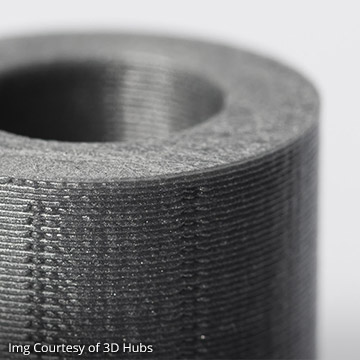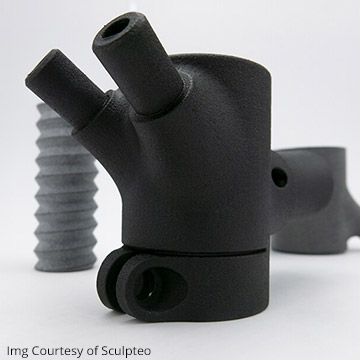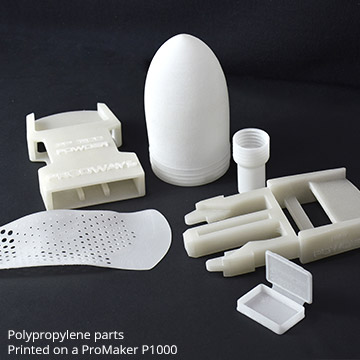There are fields and applications of 3D printing where consistent, real-world-like mechanical properties represent the most important, ultimate features.
In automotive, special machinery design, defense, medical, eyewear as well as consumer products development, having 3D printed parts with the same stiffness, torque resistance, ductility, elongation-at-break of the injection-molded or milled counterparts, is extremely important.
When it comes to polymers, only 3 technologies can answer these needs, each one with their own pros and cons: FDM, Binder Jetting/Fusion (MJF), and Selective Laser Sintering (SLS).
|
|
|
|
FDM |
Binder Jetting / fusion |
Selective Laser Sintering |
|
The FDM term is usually associated with cheap 3D printers you can find almost everywhere online or at your local electronics shop. They are amateur or pro-user tools that are often fragile, with limited material choices and low accuracy. But there are actually some high-end FDM printers that can deliver tough, high-temperature resistant parts with a high level of precision, and capable of print really big parts. A generally lower price point compared to other technologies is one of the factors that make these printers so interesting. |
Lately we saw the rise of a new, somehow interesting powder-based technology, that uses printheads to deploy agents that react to heat, to selectively melt the agent-soaked powder and not the surrounding. This process can be considered a hybrid between laser sintering and a binder-jetting. While usually very expensive, and with a not easy to determine cost of ownership, great productivity is the key feature of this technology. |
A rock-solid 3D printing technology, profitably used in the most demanding environments from just prototyping to aerospace and everything between, that boasts a wide range of materials, from standard nylons up to advanced materials such as TPU or Polypropylene (PP). Once definitely expensive, also thanks to Prodways, SLS® is now accessible even to the small and medium service bureaus, OEMs and R&D centers that need to overcome the limits of their FDM printers. |
The advantages of SLS® vs FDM
- No need to print part supports: whether your parts have overhangs or complex internal cavities, the unsintered powder itself will act as a support, so you spare material and time
- Use the full volume of the printer: Not having to build supports gives you the freedom to use the full volume of the printer with no limitation in part design and orientation. You can create super-dense nestings to maximize your productivity and have the best ROI.
- Higher production speed: compared to FDM, duplicating the part to be printed does not double the print time, making this technology ideal for short to medium run productions.
- Larger big volumes: while there are some big FDM printers out there, generally speaking, Laser Sintering machines have bigger print sizes compared to FDMs.
- Fast post-processing: just take out the parts form the powder and sandblast them. That’s it. No supports to scrap (and of course no curing, and no soluble baths)
- Lower cost per part: The combination of the aforementioned points, make Laser Sintering a better choice when the cost per part is a sensitive topic.
- Better surface finish: SLS® printed parts have a surface quality that with FDM you can reach only after heavy post-processing. Reduced layering effect and smooth flat surfaces.
- Z Strength: Plus, compared to other techniques, SLS® provide much better Z-axis mechanical properties
The advantages of SLS® vs MJF
- Better and consistent mechanical properties: One of the downsides of Binder Jetting / fusion technology is that – because of its own nature – the mechanical properties of the 3D printed objects will never be on par with the ones of a laser sintered part, because of the residual agent trapped inside. The SLS process produces stronger parts with mechanical properties that meet the needs of demanding markets for high-strength end-use components.
- Color freedom: Laser sintered parts can be colored either in post-processing, either adding color charges in the powder before printing.
This is not true for Binder Jetting / fusion parts, since that are always dark (black or gray) because of the agents used. So, it’s almost impossible to have a pure white, yellow or light-green part, even trough coloring post-process. - No consumables or hidden costs : Compared to Jetting/Fusion technology, SLS® makes no use of agents or inks, no printheads or vats to be replaced.
See our SLS® 3D printers range >>




